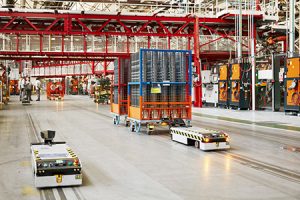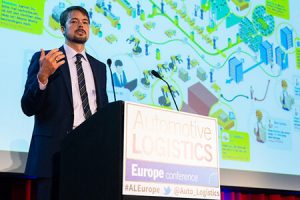 Vehicle manufacturers, parts-makers and logistics service providers need to develop more adaptable systems if they are to deal with a radical shift in consumer demand for products and services driven by the exponential development of digital services, delegates at this week's Automotive Logistics Europe conference in Bonn, Germany, were told.
Vehicle manufacturers, parts-makers and logistics service providers need to develop more adaptable systems if they are to deal with a radical shift in consumer demand for products and services driven by the exponential development of digital services, delegates at this week's Automotive Logistics Europe conference in Bonn, Germany, were told.
According to Christian Schwede, head of department at German applied sciences institute, Fraunhofer IML, while consumers are turning to the shared economy in their choice of mobility, they are doing so with a greater emphasis on individualisation and a shorter delivery time – part of 'democratic decentralisation' of traditional consumer models.
To the cope with this, he said, the automotive industry needs to abandon attempts to stretch legacy systems to their limits and embrace a similar, more cellular approach to the supply chain, one in which logistics is organised in autonomous communicating cells, be that a worker, a robot or an AI programme.
“These cells interconnect and while interconnecting and exchanging information in real time, they can react flexibly to new situations and adapt themselves,” said Schwerde. “Nature has not created a lot of hierarchical systems to react to changing circumstances – it is decentralised. We believe that with this decentralised approach, we can cope with the difficulties we have right now.”
While this seems academic or even fanciful in an industry that is still generating plenty of revenue through a traditional mass market dominated by major OEMs, investments in emerging technology are taking off.
[mpu_ad]According to Matthias Kässer, partner at analyst firm McKinsey & Co, new technologies are going to be the dominant force in sourcing revenue for car companies and investment is critical. Between 2010 and 2013, there was a €4.3 billion ($5 billion) investment in such areas as connected services, autonomy and electrification. That figure jumped to €25.3 billion between 2014 and last year.
There is already evidence of this on the logistics side of the business, with the use of intelligent AGVs able to recognise parts and participate with line-side workers using industry 4.0 technology. Better scheduling of maintenance through the use of predictive analytics drawn from data in producing smart parts makes aftermarket distribution and storage more efficient. Schwede also mentioned the use of predictive artificial intelligence (AI) in supply chain management to combat loss by reducing disruptions.
Jorg Blechinger, director of logistics at Magna Europe, also saw the supply chain structure changing significantly over the next five years thanks to a range of technological-related influences that were bringing a complex global supply networks closer together through enhanced communication. The use of business supporting apps was erasing traditional interfaces between those working in the supply chain and with the customer. All of this was leading to different priorites for discussion between Magna and its partners, he said.

According to Blechinger, Magna has developed a range of systems, including operational systems, that are now getting integrated into its daily business, such as the standardisation of enterprise resource planning (ERP).
“We also had a strong focus on the planning systems that record data for better planning and systems solutions for engineering the supply chain,” said Blechinger.
He said the next step involved a smart factory approach with industry 4.0 applications that Magna initiated some months ago and which made the company fit for the future.
One more important point made about emerging technology by Björn Klippel, CEO of Tim Consult, was that it was not a solution in itself but a supporting tool for innovative procurement and planning, and something that required talented management to enhance fact based decision making in the supply chain.
"We are all flooded with information but having the intelligence to understand what that means and how it can be used is the real question," said Klippel.













































